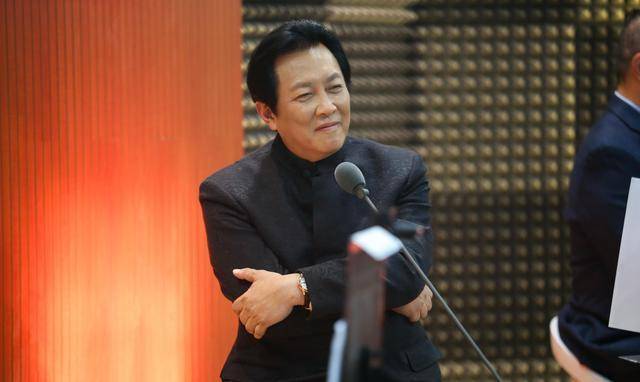жҺҘеҸЈеңЁзәҝдёҠжңҚеҠЎеҷЁеҮәзҺ°ејӮеёёзҡ„ж—¶еҖҷ пјҢ жҲ‘们第дёҖж—¶й—ҙе°ұжҳҜеҺ»жңҚеҠЎеҷЁзңӢдёӢlog пјҢ жЈҖжҹҘlogжҳҜеҗҰжңүејӮеёёе Ҷж ҲдҝЎжҒҜ пјҢ еҰӮжһңжңүејӮеёёе Ҷж ҲдҝЎжҒҜзҡ„иҜқ пјҢ еҶҚз»“еҗҲapiзҡ„access log пјҢ жҳҜйқһеёёе®№жҳ“жүҫеҮәй—®йўҳжүҖеңЁзҡ„ пјҢ жүҖд»ҘжҲ‘们иҰҒеӯҰдјҡзңӢејӮеёёе Ҷж ҲдҝЎжҒҜ гҖӮејӮеёёе Ҷж ҲдҝЎжҒҜеҰӮдҪ•зңӢе‘ўпјҹдёӢйқўжҲ‘们дёҖиө·жқҘзңӢдёҖдёӢ гҖӮ
дёӢйқўжҳҜдёҖдёӘз®ҖеҚ•зҡ„demoпјҡ
package person.ismallboy.console;import JAVA.io.IOException;public class TestEx {private void fun1() throws IOException {throw new IOException("level 1 exception");}private void fun2() throws IOException {try {fun1();System.out.println("2");} catch (IOException e) {throw new IOException("level 2 exception", e);}}private void fun3() {try {fun2();System.out.println("3");} catch (IOException e) {throw new RuntimeException("level 3 exception", e);}}public static void main(String[] args) {try {new TestEx().fun3();System.out.println("0");} catch (Exception e) {e.printStackTrace();}}}жү§иЎҢдёҠйқўdemoзҡ„mainеҮҪж•° пјҢ иҫ“еҮәз»“жһңеҰӮдёӢпјҡ
Connected to the target VM, address: '127.0.0.1:57353', transport: 'socket'java.lang.RuntimeException: level 3 exceptionat person.ismallboy.console.TestEx.fun3(TestEx.java:24)at person.ismallboy.console.TestEx.main(TestEx.java:30)Caused by: java.io.IOException: level 2 exceptionat person.ismallboy.console.TestEx.fun2(TestEx.java:15)at person.ismallboy.console.TestEx.fun3(TestEx.java:21)... 1 moreCaused by: java.io.IOException: level 1 exceptionat person.ismallboy.console.TestEx.fun1(TestEx.java:7)at person.ismallboy.console.TestEx.fun2(TestEx.java:12)... 2 moreDisconnected from the target VM, address: '127.0.0.1:57353', transport: 'socket'既然жҳҜе Ҷж Ҳ пјҢ йӮЈиӮҜе®ҡжҳҜFILOпјҲе…ҲиҝӣеҗҺеҮәпјүзҡ„ пјҢ дәҶи§ЈиҝҮзәҝзЁӢе Ҷж ҲпјҲжҜ”еҰӮеҮҪж•°и°ғз”Ёзҡ„ж—¶еҖҷеҸӮж•°е’ҢеұҖйғЁеҸҳйҮҸзҡ„е…Ҙж Ҳе’ҢеҮәж Ҳпјүзҡ„еҗҢеӯҰеә”иҜҘжҜ”иҫғжё…жҘҡ гҖӮжүҖд»ҘжҲ‘们зңӢжү“еҮәжқҘзҡ„ејӮеёёе Ҷж Ҳзҡ„йЎәеәҸ пјҢ д№ҹеә”иҜҘжҳҜд»ҺдёӢеҫҖдёҠзңӢ пјҢ е°ұжҳҜд»Һ第12иЎҢејҖе§ӢеҫҖдёҠзңӢ пјҢ дёҖзӣҙзңӢеҲ°з¬¬2иЎҢ пјҢ еҸ‘зҺ°з¬¬10иЎҢжүҚжҳҜй—®йўҳзҡ„ж №жәҗ пјҢ ејӮеёёжҳҜдёҖеұӮдёҖеұӮең°еҫҖеӨ–жҠӣеҮә пјҢ зӣҙиҮіжҠӣеҮәеҲ°жңҖеӨ–еұӮпјҲеҚіжІЎжңүcatchдёәжӯўпјү гҖӮ第2иЎҢзҡ„RuntimeExceptionеҸӘжҳҜзңҹжӯЈејӮеёёзҡ„дёҖдёӘеӨ–еұӮиЎЁзҺ°иҖҢе·І пјҢ ејӮеёёзҡ„ж №жәҗиҝҳжҳҜиҰҒзңӢе Ҷж ҲжңҖеә•йғЁзҡ„дҝЎжҒҜ гҖӮжң¬demoејӮеёёжҠӣеҮәзҡ„жөҒзЁӢеӨ§жҰӮеҰӮдёӢпјҡ

ж–Үз« жҸ’еӣҫ
жүҖд»Ҙ пјҢ Caused by(дёӯж–ҮжҳҜ“з”ұ...йҖ жҲҗзҡ„”ж„ҸжҖқ)д№ҹе°ұжҜ”иҫғеҘҪзҗҶи§ЈдәҶ пјҢ е°ұжҳҜиҝҷдёӘејӮеёёж—¶з”ұе“ӘйҮҢи§ҰеҸ‘зҡ„ж„ҸжҖқ гҖӮfun3зҡ„ејӮеёёжҳҜз”ұfun2зҡ„ејӮеёёи§ҰеҸ‘зҡ„ пјҢ иҖҢfun2зҡ„ејӮеёёеҸҲжҳҜз”ұfun1зҡ„ејӮеёёи§ҰеҸ‘зҡ„ гҖӮ
и§ЈеҶідәҶејӮеёёе Ҷж ҲжҹҘзңӢйЎәеәҸзҡ„й—®йўҳ пјҢ жҲ‘们з»ҶзңӢдёҠйқўdemoжү“еҚ°еҮәжқҘзҡ„ејӮеёёе Ҷж ҲдҝЎжҒҜ пјҢ дјҡеҸ‘зҺ° пјҢ жү“еҚ°еҮәжқҘзҡ„е Ҷж ҲдҝЎжҒҜдёҚе®Ңж•ҙ пјҢ жҜ”еҰӮ第8иЎҢзҡ„“ ... 1 more”е’Ң第12иЎҢзҡ„“... 2 more” пјҢ дёәд»Җд№ҲjvmдјҡзңҒз•ҘйғЁеҲҶе Ҷж ҲдҝЎжҒҜе‘ўпјҹдёӢйқўжҲ‘们继з»ӯжҺўи®ЁдёҖдёӢ гҖӮ
1.дёәд»Җд№Ҳжңүдәӣе Ҷж ҲдҝЎжҒҜиў«йҡҗи—ҸдәҶпјҹ... 2 more
жҲ‘们жқҘзңӢдёҖдёӢжү“еҚ°ејӮеёёе Ҷж ҲдҝЎжҒҜзҡ„жәҗз Ғ пјҢ иҫ“еҮәеҮҪж•°жҳҜ
java.lang.Throwable#printEnclosedStackTraceиҫ“еҮәејӮеёёе Ҷж ҲеҮҪж•°жәҗд»Јз ҒеҰӮдёӢпјҡ/*** Print our stack trace as an enclosed exception for the specified* stack trace.*/private void printEnclosedStackTrace(PrintStreamOrWriter s,StackTraceElement[] enclosingTrace,String caption,String prefix,Set<Throwable> dejaVu) {assert Thread.holdsLock(s.lock());if (dejaVu.contains(this)) {s.println("t[CIRCULAR REFERENCE:" + this + "]");} else {dejaVu.add(this);// Compute number of frames in common between this and enclosing traceStackTraceElement[] trace = getOurStackTrace();int m = trace.length - 1;int n = enclosingTrace.length - 1;while (m >= 0 && n >=0 && trace[m].equals(enclosingTrace[n])) {m--; n--;}int framesInCommon = trace.length - 1 - m;// Print our stack traces.println(prefix + caption + this);for (int i = 0; i <= m; i++)s.println(prefix + "tat " + trace[i]);if (framesInCommon != 0)s.println(prefix + "t... " + framesInCommon + " more");// Print suppressed exceptions, if anyfor (Throwable se : getSuppressed())se.printEnclosedStackTrace(s, trace, SUPPRESSED_CAPTION,prefix +"t", dejaVu);// Print cause, if anyThrowable ourCause = getCause();if (ourCause != null)ourCause.printEnclosedStackTrace(s, trace, CAUSE_CAPTION, prefix, dejaVu);}}жҲ‘们жқҘеҲҶжһҗдёҖдёӢиҝҷдёӘеҮҪж•° пјҢ иҝҷйҮҢе…¶е®һжҳҜдёҖдёӘеӣһи°ғиҫ“еҮәе Ҷж Ҳзҡ„иҝҮзЁӢ гҖӮжҲ‘们е…ҲжқҘиҜҙдёҖдёӢдёәд»Җд№Ҳдјҡйҡҗи—ҸйғЁеҲҶе Ҷж Ҳ пјҢ еҪ“然жҳҜдёәдәҶжҸҗй«ҳжҖ§иғҪ пјҢ зңҒз•ҘдёҖдәӣдёҚеҝ…иҰҒзҡ„иҫ“еҮәе•Ұ пјҢ иҫ“еҮәзҡ„еҶ…е®№и¶ҠеӨҡ пјҢ ioиҖ—ж—¶и¶Ҡж…ўеҳӣ гҖӮ
жҺЁиҚҗйҳ…иҜ»
- |йҖҶеҗ‘жҖқз»ҙпјҡжҖ§иҜҶдёҚе®ҡпјҢжүҫеҲ°дҪ зҡ„еҮҶзЎ®е®ҡдҪҚпјҢдёҖеҲҮеӣ°йҡҫйғҪдјҡиҝҺеҲғиҖҢи§Ј
- дәәеҠӣиө„жәҗ|30еІҒд»ҘеүҚпјҢдҪ еә”иҜҘжҸҗеүҚ规еҲ’иҝҷ3件дәӢжғ…пјҒ
- иҠ«йқ’й…’зҡ„еҠҹж•ҲдёҺдҪңз”Ё
- и”“иҚҠеӯҗй…’зҡ„еҠҹж•ҲдёҺдҪңз”Ё
- ж«»жЎғй…’зҡ„еҠҹж•ҲдёҺдҪңз”Ё
- иӢҰиҚһиҢ¶е’Ңй»‘иӢҰиҚһе“ӘдёӘеҘҪ,еӣӣеӨ§жӯҘйӘӨж•ҷдҪ еҰӮдҪ•з®Җжҳ“иҖҢеҝ«йҖҹзҡ„еҶІжіЎзҷҫеҗҲиҠұиҢ¶
- 2еҲҶй’ҹеӯҰдјҡпјҢжҸҗеҚҮдҪ ж°”иҙЁзҡ„20дёӘе°Ҹд№ жғҜ
- 4дёӘеұӮйқўпјҢи®©дҪ еӯҰдјҡеҗ‘дёҠз®ЎзҗҶпјҢиөўеҫ—еҚҮиҒҢеҠ и–Әзҡ„жӯЈзЎ®е§ҝеҠҝ
- еҢ—дә¬зҺҜзҗғеәҰеҒҮеҢәжҖҺд№ҲеҺ»пјҹең°й“ҒгҖҒй©ҫиҪҰйғҪж–№дҫҝпјҢе°Ҹзј–еёҰдҪ иө°дёҖи¶ҹ
- е…ЁжҳҜз»ҶиҠӮпјҒеҺЁжҲҝиЈ…дҝ®жңҖеёёи§Ғзҡ„5еӨ§иҜҜеҢәпјҢдҪ жіЁж„ҸеҲ°дәҶеҗ—пјҹ






![[еҒҘеә·иҝҗеҠҝ]е…ӯжңҲ3еӨ§еұһзӣёжЁӘиҙўдёҖеӨ§жҠҠпјҢиҙўзҘһе…із…§пјҢдәӢдёҡеӨ§дё°ж”¶пјҢжҲҗеҠҹжӯҘе…ҘдёҠеқЎи·Ҝ](http://img88.010lm.com/img.php?https://image.uc.cn/s/wemedia/s/2020/8800b96d223eb4432ab075c3b9cb0472.jpg)








